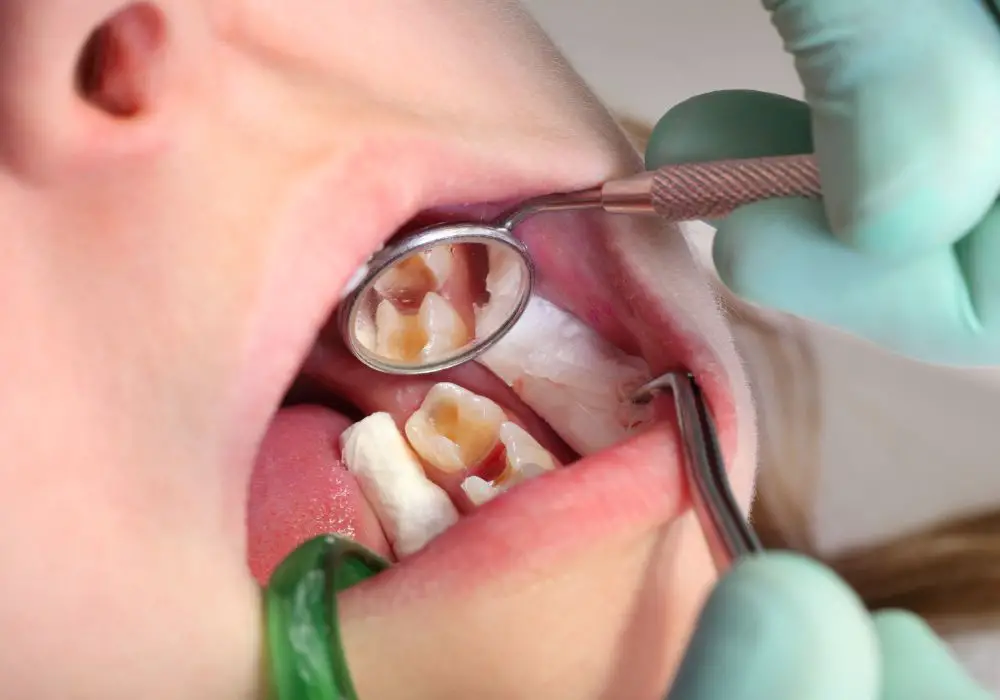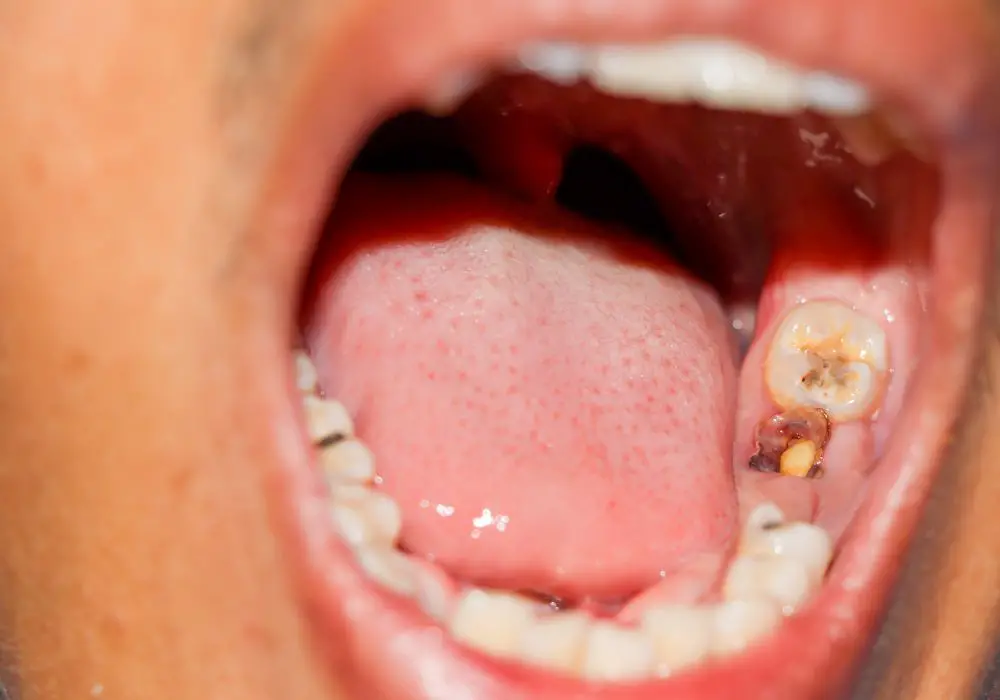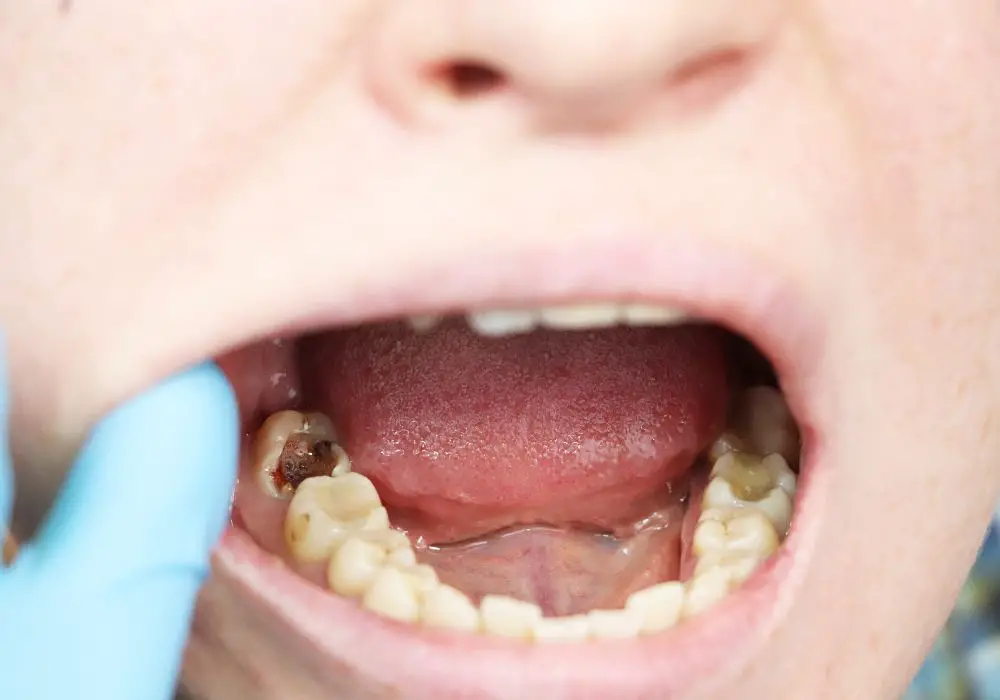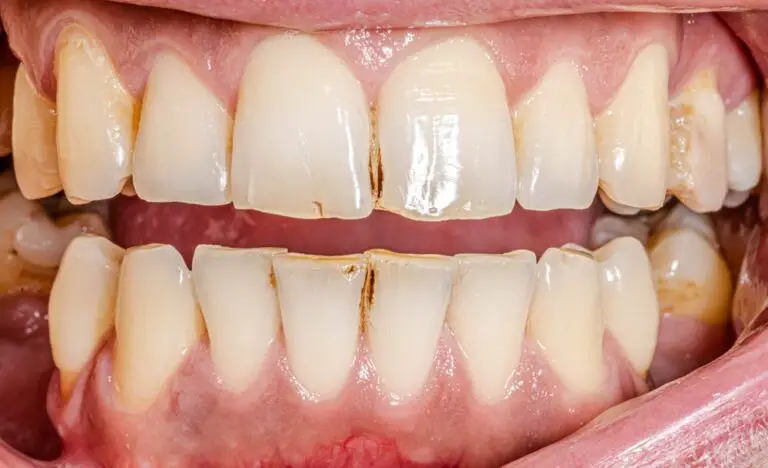Tooth decay leading to cavities (dental caries) is one of the most prevalent chronic diseases worldwide, affecting an estimated 2.4 billion people. Cavities begin as small weaknesses in the enamel surface of teeth that gradually enlarge into holes. If left untreated, cavities continue growing deeper into the inner tooth layers, eventually reaching the pulp tissue inside. This can lead to severe toothache, infection, and tooth loss. But what if you have an early cavity – can it heal on its own without traditional dental work? This in-depth article examines the potential for natural tooth repair.
What Processes Cause Cavities to Develop?

Before exploring whether cavities can self-heal, it’s important to understand what leads to cavity formation in the first place. The development of cavities involves a complex interplay of factors:
Bacteria: Hundreds of species of bacteria commonly inhabit the mouth. Certain bacteria, especially Streptococcus mutans and Lactobacillus, thrive on consuming sugars and fermenting them into acids. The acidic byproducts dissolve and demineralize the enamel surface of teeth.
Plaque: Plaque is a biofilm containing bacteria that adheres to teeth, especially in hard-to-clean areas. As plaque accumulates, bacterial levels rise, fueling acid production and attacking enamel.
Sugars: Bacteria soak up sugars from food and drinks to create their acidic waste. Frequent exposure to sugary foods and beverages promotes cavity-causing acidity.
Saliva: Saliva helps neutralize plaque acids, wash away food debris, and deliver calcium and phosphate ions to remineralize early decay. Too little saliva increases cavity risk.
Fluoride: Fluoride makes enamel more resistant to acid and aids remineralization. Insufficient fluoride, from water, dental products, or treatments makes teeth more prone to cavities.
Enamel Strength: The enamel structure can be weaker due to genetic factors, nutritional deficiencies, or developmental defects. Weaker enamel is more easily eroded into cavities.
Cavity formation is a stealthy process. Enamel first develops tiny microscopic pores that gradually grow into larger lesions. If given the chance, decay will continue into the softer dentin inside teeth and advance toward the innermost pulp.
The Tooth Layers and Structures Affected by Cavities
Teeth have complex structures made up of different mineralized tissues. Knowing tooth anatomy helps explain why cavities spread and their potential to heal:
Enamel – The hard, outer covering of teeth composed of hydroxyapatite crystals. Enamel lacks living cells and cannot replenish itself once eroded by cavities.
Dentin – Softer tissue beneath enamel containing tubules with nerve fibers and live cells called odontoblasts. These cells produce dentin and may respond to cavities by forming reparative dentin.
Pulp – The innermost chamber containing blood vessels, nerves, and connective tissue. Cavities reaching the pulp cause pulpitis inflammation and severe pain.
Cementum – Bonelike tissue covering roots to attach teeth to the jawbone via the periodontal ligament. Cavities rarely affect cementum.
Gingiva – The gum tissue surrounding teeth. If cavities spread deeply, they may involve infection of the gingiva.
This layered structure is vulnerable to expanding cavities but also influences natural healing potential. The location and extent of decay guides expectations for self-repair.
Can Small Cavities Heal Without Treatment?
The prospect of cavities healing without traditional dental work depends on the stage of decay. Tiny cavities limited to the enamel surface have a chance of naturally rehardening before growing bigger. Saliva can deposit minerals into microscopic pores to remineralize the area. Fluoride from toothpaste, rinses, or professionals treatments fosters remineralization.
With diligent oral hygiene to control bacteria plus dietary changes to limit fermentable carbohydrates, early decay may stop progressing. But while the cavity remains, the enamel is still somewhat demineralized and prone to future acid attacks. True healing implies rebuilding the weakened area, which enamel cannot do.
For small dentin cavities, odontoblasts may wall off the decay with reparative or reactionary dentin. But this dentin is irregular and porous compared to the original tissue. As decay nears the pulp, natural repair is no longer possible. Larger cavities, or those left longer before addressing, are unlikely to self-repair.
When Are Cavities Beyond the Body’s Healing Capabilities?

Though limited cases allow for some natural rehardening, most cavities ultimately require restorative dentistry techniques to avoid consequences like:
- Severe pain from exposed dentin and inflamed pulp
- Dental abscesses and infections needing antibiotics or extraction
- Loss of substantial tooth structure affecting form and function
- Eventual damage to the tooth pulp tissue necessitating root canal
- Spread of decay to involve adjacent teeth
Warning signs a cavity is too advanced for natural healing include:
- Remaining demineralized and active despite improved hygiene and diet
- Increased sensitivity to hot, cold, or sweet stimuli
- Lingering, spontaneous pain without provocation
- Diminished chewing ability on the affected tooth
- Visible discoloration or darkening of enamel
- Size expanding beyond 2-3mm or approaching the pulp chamber
- Presence for 3 or more months without stabilization
Dentists can assess these parameters clinically and radiographically to determine if nonsurgical options can be tried or definitive repair is needed. If caries reaches the inner pulp layer, root canal or extraction are the only options.
Factors Promoting Natural Remineralization of Early Lesions
The key factors allowing cavity rehardening in some situations include:
- Lesion depth – Shallower decay has higher remineralization potential. Surface-level and enamel-only lesions are best.
- Lesion size – Smaller cavities have more surface area for mineral redeposition per volume. Less than 2mm diameter is optimal.
- Time – Remineralization works best when started before substantial demineralization occurs. Newer lesions reharden better.
- Plaque removal – Thorough, consistent oral hygiene keeps decay-causing bacteria lower.
- Fluoride – Fluoride incorporated into hydroxyapatite crystals strengthens enamel and promotes remineralization.
- Saliva flow – Adequate unstimulated and stimulated saliva helps buffer acids and replenish calcium.
- Adapted diet – Limiting fermentable sugars and consuming tooth-protective nutrients like vitamin D, phosphorus, green tea, etc.
Even with ideal conditions, true regeneration of lost tooth structure remains elusive. But remineralization can arrest lesions before they require restorative interventions.
Do Alternative Treatments Claiming to Heal Cavities Work?
Many alternative health proponents claim cavities can heal through natural means like dietary changes, oil pulling, ozone therapy, or nutritional supplements. However, there is no scientific evidence that any nonsurgical treatment heals moderate to advanced decay. A sampling of popular but unproven approaches:
- Oil pulling – Swishing oils like coconut, sesame, or sunflower oil supposedly pulls toxins from teeth to treat decay and whiten teeth. No clinical studies support these claims.
- Dietary protocols – Restrictive diets like gluten-free, grain-free, paleo, or alkaline diets aim to “cure” cavities by avoiding certain foods. But poor-quality research methodology invalidates associated cavity healing claims.
- Vitamins and minerals – Supplements like vitamin D, K2, collagen, and calcium do not treat existing cavities though they may slightly reduce future risk.
- Ozone therapy – Applying ozone gas or ozonated oils to teeth has not conclusively shown anti-cavity benefits despite marketing claims.
- Silver nitrate – This solution can temporarily arrest decay by killing bacteria but does not restore lost tooth structure. Home application risks burns.
These therapies at best assist remineralization of microscopic lesions but cannot replace definitive cavity treatment. Beware of dental misinformation online.
Can Cavities Physically Heal After Conventional Restoration?
Traditional cavity treatments like fillings and crowns repair holes in teeth and prevent further damage but do not enable true tooth healing. Fillings physically plug holes in teeth and eliminate infection risk. But they do not restore lost enamel or dentin. The original mineral structure and cellular tissue is permanently damaged.
However, dentin may continue developing after cavity preparation due to stimulation of the inner pulp. This reactionary or reparative dentin helps protect pulp tissue under restorations but does not regenerate all lost dentin. Bonding between natural dentin and filler material can also gradually strengthen over time. But overall, the replacement of diseased tooth structure with artificial material does not constitute healing.
New techniques using stem cell therapy, growth factors, and tissue engineering offer hope of regenerating dental tissue to fully heal cavities. But these emerging cavity reversal methods need much more testing before clinical use.
Can Cavities Be Prevented After They Have Formed?
The ideal approach is to stop the development of new cavities and halt the progression of existing ones. Rigorous oral hygiene, fluoride exposure, dental sealants, and dietary modifications help prevent fresh decay. Monitoring cavities through regular dental exams allows early intervention with nonsurgical options when feasible. But again, most cavities will not disappear or heal without professional treatment.
Preventing cavities altogether is better than attempting to heal them. Key prevention strategies include:
- Brushing thoroughly twice daily with a fluoride toothpaste
- Flossing once daily to clean between teeth
- Using antibacterial and fluoride mouthwashes
- Applying prescription strength fluoride varnish and gel
- Replacing toothbrushes every 3 months
- Seeing a dentist for cleanings and sealant placement every 6 months
- Drinking fluoridated water and limiting sugary beverages
- Choosing non-cariogenic foods over refined carbohydrates and sugars
Adequate saliva flow and oral pH also prevent decay, as does excellent oral hygiene around dental appliances. With diligence, many cavities can be avoided from the start.
When to Seek Professional Dental Care for Cavities

Cavities that have already formed require customized professional treatment plans based on severity. Consult a dentist promptly if you experience any of the following:
- Toothache, especially in response to hot/cold stimuli
- Lingering sensitivity or pain when eating certain foods
- Gum irritation, swelling, or pus discharge around a tooth
- Halitosis and unpleasant tastes
- Visible pits, holes, or dark spots on teeth
- Changes in tooth shape, length, or alignment
- Breaking, chipping, or crumbling of any part of a tooth
Dentists have an array of treatment options for decay ranging from fluoride and sealants to fillings and crowns. Most cavities will not resolve without one of these approaches. Seek evaluation and appropriate restorative therapy before extensive damage occurs.
Frequently Asked Questions
Q: What is the most effective way to heal small cavities naturally?
A: The combination of meticulous oral hygiene, fluoride exposure, dental sealants, and reducing sugars has the best chance of rehardening the slightest lesions. But be realistic – cavities rarely “heal” without professional treatment once they are past the microscopic stage.
Q: Can cavities remineralize instead of getting fillings?
A: Shallow lesions may remineralize and stabilize with diligent home care and fluoride. But most cavities continue worsening without restoration, risking substantial tooth damage and infection. It’s best to partner with your dentist to determine appropriate options.
Q: What food optimizes cavity healing?
A: No particular superfood heals cavities, but limiting sugars and refined carbohydrates, eating crunchy fruits/veggies, dairy, and getting nutrients like calcium, phosphate, and vitamin D support overall dental health and remineralization.
Q: Does coconut oil pull help cavities?
A: Oil pulling does not treat existing decay. While it may benefit oral hygiene, any effects on cavities specifically are unsubstantiated. Don’t trust unproven “natural healing” internet claims.
Q: Can serious cavities ever heal on their own?
A: No, moderate to advanced decay requires restorative dental treatment like fillings, crowns, or extraction. Leaving extensive cavities risks pain, infection, tooth loss, and systemic health issues. Seek professional advice promptly.
Conclusion
Healing cavities without traditional dental treatment would be a game-changer. But while limited cases allow for natural rehardening of microscopic enamel lesions, most cavities inevitably worsen over time without intervention. Even with excellent oral hygiene and natural therapies, decay eventually compromises tooth structure. While sealing early decay and preventing further progression is possible, true regeneration of lost enamel, dentin, and pulp remains elusive. Work with your dentist to detect cavities early and halt them before reaching an advanced stage requiring more invasive solutions. With innovations in biomaterials and tissue engineering, biological repair and renewal of diseased teeth may become a reality in the future.







